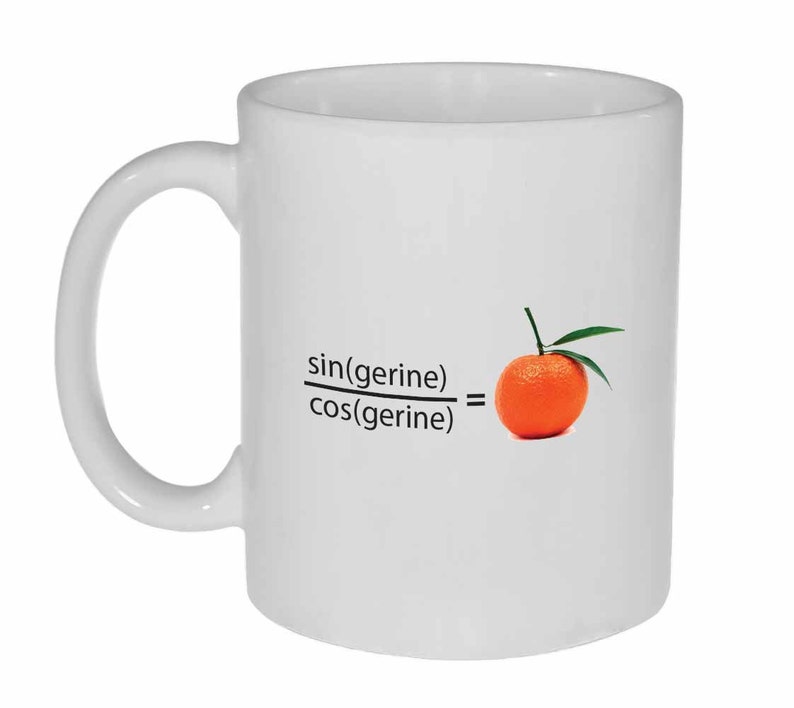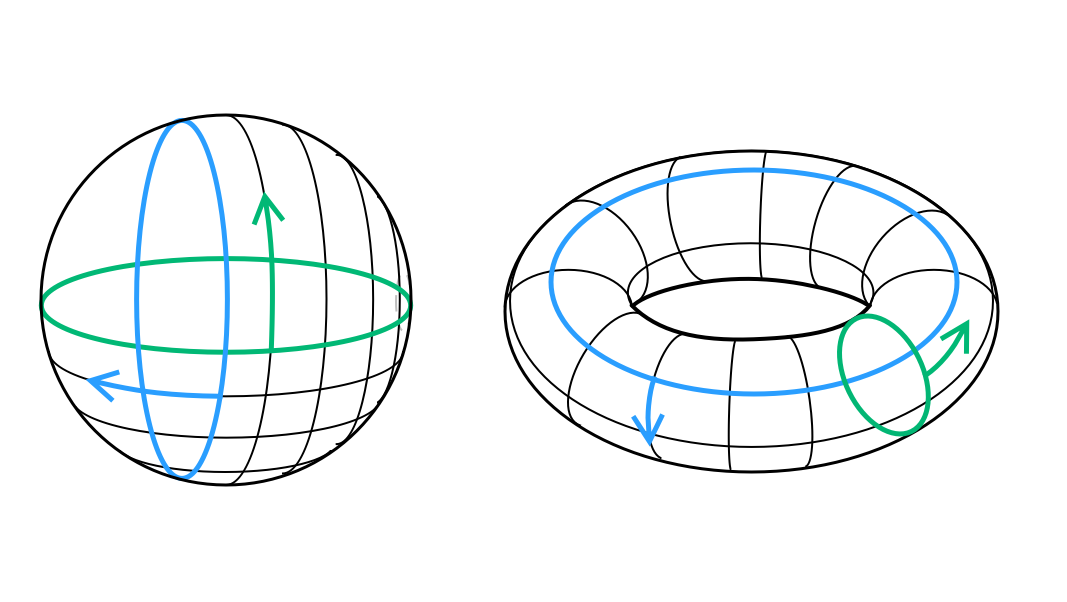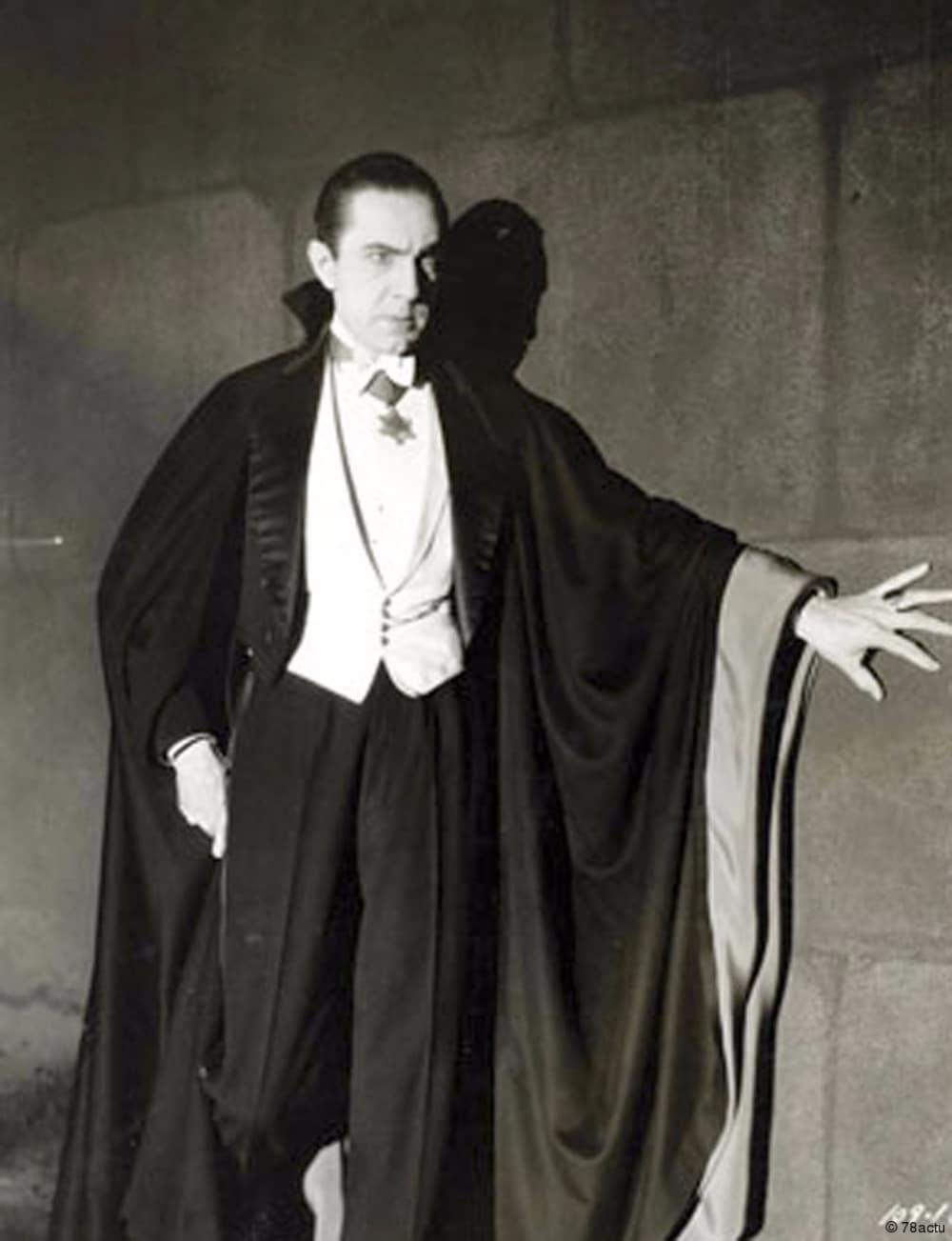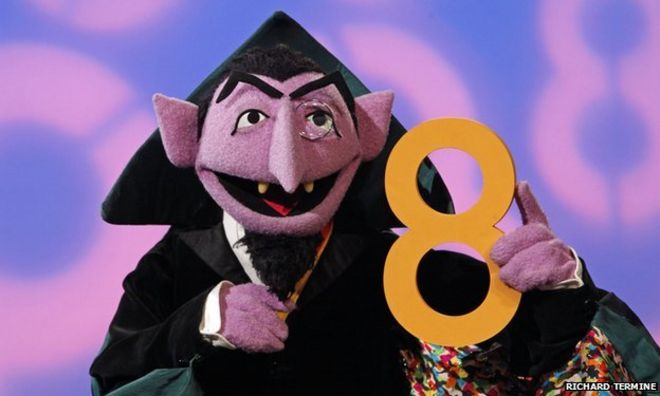Be sure to let us know how you solved it in the comments below or on social media!
DO the math, DON'T overpay. We make high quality, low-cost math resources a reality.
Thursday, December 26, 2019
PotW: Maximizing the sum of x and y [Algebra]
Check out this Problem of the Week.
Be sure to let us know how you solved it in the comments below or on social media!
Solution below.
Be sure to let us know how you solved it in the comments below or on social media!
Wednesday, December 18, 2019
The Mathematician's Gift Guide
The holiday season is in full swing, and there's less than a week left to do holiday shopping! Are you still unsure of what gifts to buy? Hopefully this list inspires you - and maybe you'll buy one or two for yourself as well!






Chisquareatops T-Shirt

If you're looking for a shirt with a cute drawing of a dinosaur and a great math pun, look no further than this shirt! There is a high probability that a mathematician will love it!
Equation Clock
Getting bored telling people the time the old-fashioned way? Spice it up with this clock! Instead of saying "1:30", you'll be able to say that it's half past the absolute value of i squared!
Tangerine Statement Mug

Anyone in your life interested in trigonometry will love this mug! It can hold coffee, tea, and any citrus-y drink you choose to put in it!
Formulas Tie

Looking to add some flair to a suit? Look no further than this tie! Containing dozens of formulas, it will be both stylish and a good reference if you need refreshing on any mathematical topic!
Stay Golden T-Shirt

The perfect gift for a mathematician who loves the Fibonacci sequence! Don't just get 1 - get 2 or 3! Or 5! Or 8, 13, 21, 34, etc.
Some of Infinity
Looking for a fun math read? Check out this book, which talks about a wide range of mathematical topics in a fun accessible way! A fun read for anyone, no matter how much math they've done!
WCoM Merch!
Looking for a stylish shirt? Some fun post cards? Even a mousepad? You can get those and more from the Center of Math Store!
Tuesday, December 17, 2019
PotW: Finding the Third Face of a Rectangular Prism [Algebra]
Check out this Problem of the Week.
Be sure to let us know how you solved it in the comments below or on social media!
Solution below.
Be sure to let us know how you solved it in the comments below or on social media!
Wednesday, December 11, 2019
Who was Ada Lovelace?
December 10th marked what would have been Ada Lovelace's 204th birthday! In honor of the occasion, the Center of Math blog is taking a look at the life of a pioneering mathematician, the world's first computer programmer!
 Ada Lovelace was born Augusta Ada Byron on December 10, 1815. Her father was Lord Byron, the acclaimed poet. However, Lovelace didn't know her father - he left a few weeks after she was born before dying in Greece when Lovelace was 8 years old. Thus, her upbringing was mostly in the hands of her mother, Annabella Milbanke. At a time where women's education was limited, Lovelace was given a rigorous education for anyone in the 19th century. She was taught by private tutors, learning languages such as French and Latin, sciences, and mathematics. She was adept at math, and began to think about the world around her in a mathematical way.
Ada Lovelace was born Augusta Ada Byron on December 10, 1815. Her father was Lord Byron, the acclaimed poet. However, Lovelace didn't know her father - he left a few weeks after she was born before dying in Greece when Lovelace was 8 years old. Thus, her upbringing was mostly in the hands of her mother, Annabella Milbanke. At a time where women's education was limited, Lovelace was given a rigorous education for anyone in the 19th century. She was taught by private tutors, learning languages such as French and Latin, sciences, and mathematics. She was adept at math, and began to think about the world around her in a mathematical way.

Life of a Mathematician
While attending a party at the age of 17, she met Charles Babbage, a mathematician and inventor, and the two struck up a friendship. Babbage, who has been called the father of the computer, served as Lovelace's mentor, and Lovelace translated works for Babbage. Shortly after meeting Babbage, Lovelace studied under Augustus de Morgan at the University of London.
Mathematical Accomplishments
Being close friends with Babbage, one of the most prominent people working on computers at the time, Lovelace got to closely study the 'analytical engines' that were being developed.
When an Italian engineer, Luigi Federico Menabrea, wrote an article about one of Babbage's creations for a Swiss journal, Babbage tasked Lovelace with translating it from French to English. Lovelace decided to do more than just translate the article - she also added her own mathematical notes to it! The final article was three times longer than the original!
Several of her notes formed the basis of computer science - which are still applied to this day! She was the first person to think of how codes of numbers and letters could make be used to make the analytical machines run. Her notes were so well thought out that she even wrote down a theory of how such code could repeat simple instructions, which is used today in a method called looping!
Because computers were a new phenomenon at the time, Lovelace's pioneering thoughts weren't recognized widely during her lifetime. However, her work helped lay the groundwork for computer programming, which is heavily relied on today by billions of people around the world!
Tuesday, December 10, 2019
PotW: Painting 5 out of 15 rocks [Combinatorics]
Check out this Problem of the Week.
Be sure to let us know how you solved it in the comments below or on social media!
Solution below.
Be sure to let us know how you solved it in the comments below or on social media!
Thursday, December 5, 2019
PotW: Seating 30 Students [Combinatorics]
Check out this Problem of the Week.
Be sure to let us know how you solved it in the comments below or on social media!
Solution below.
Be sure to let us know how you solved it in the comments below or on social media!
Wednesday, December 4, 2019
Who was Pierre de Fermat?
Anyone who has studied math has probably stumbled upon Pierre de Fermat. It could be his Two Squares Theorem, his Little Theorem, or even his famously unproven Last Theorem. His contributions to the study of mathematics have been countless, from fields from Calculus to Probabilities, some of which are being studied today! How did a lawyer from France make such groundbreaking contributions in math? Read more to find out!
 Pierre Fermat was born in either 1607 or 1608 in southern France. His father was a wealthy businessman, and his mother was from a high class family. Although little detail is known about his early education, there is enough evidence to suggest that it was a very effective education - Fermat was fluent in classical Greek, Latin, Spanish, Italian, and Occitan!
Much of Fermat's math was done in letters to companions. Although he claimed that he had proven all of his theorems and conjectures, very few of his proofs survived. However, over the years, mathematicians have been able to prove much of what he wrote. These theorems are just a small selection of the vast contributions Fermat made to mathematics!
Pierre Fermat was born in either 1607 or 1608 in southern France. His father was a wealthy businessman, and his mother was from a high class family. Although little detail is known about his early education, there is enough evidence to suggest that it was a very effective education - Fermat was fluent in classical Greek, Latin, Spanish, Italian, and Occitan!
Much of Fermat's math was done in letters to companions. Although he claimed that he had proven all of his theorems and conjectures, very few of his proofs survived. However, over the years, mathematicians have been able to prove much of what he wrote. These theorems are just a small selection of the vast contributions Fermat made to mathematics!

The Life of a Mathematician
 Pierre Fermat was born in either 1607 or 1608 in southern France. His father was a wealthy businessman, and his mother was from a high class family. Although little detail is known about his early education, there is enough evidence to suggest that it was a very effective education - Fermat was fluent in classical Greek, Latin, Spanish, Italian, and Occitan!
Pierre Fermat was born in either 1607 or 1608 in southern France. His father was a wealthy businessman, and his mother was from a high class family. Although little detail is known about his early education, there is enough evidence to suggest that it was a very effective education - Fermat was fluent in classical Greek, Latin, Spanish, Italian, and Occitan!
From a young age, Fermat had an interest in mathematics, and this interest blossomed when he turned 19. It was at this age that he began a career as a lawyer in Bordeaux. While there, he became friends with Etienne d'Espagnet, who inherited several mathematical books that Fermat was able to borrow. Shortly after he began practicing law, his father passed away, leaving Fermat with a substantial inheritance. In 1630, at the age of 23, Fermat paid a large amount of money to gain a senior position in the High Court of Toulouse. This was a lifelong position of nobility. Because of the nobility associated with the position, Fermat was known as Pierre de Fermat from this time until his death.
Fermat's Theorems and Conjectures
His two square theorem deals with prime numbers. The theorem states that any prime number will be the sum of two squares if and only if the prime number has a remainder of 1 when divided by 4 (or if the prime number is 2). We can see this is true with some small prime numbers: 5 and 13 each have a remainder of 1 when divided by 4, and they are each the sum of two squares (5 = 4 + 1 and 13 = 9 + 4). However, looking at 3 and 7, we can see that neither of them equal the sum of two squares. This holds true with all prime numbers!
Fermat's little theorem is simple in scope, but is used today in coding! The theorem states that if there are two integers a and p such that p is prime and not a factor of a, then a raised to the p-1 power divided by p will always have a remainder of 1. To show this, take p=3 and a=8. 8 * 8 = 64, and 64/3 = 21 R 1. This will work for all prime numbers, which allows mathematicians to use this theorem to check if large numbers are prime!

The last theorem we'll discuss is, fittingly, Fermat's Last Theorem. Fermat passed away before he was able to prove this, and for over three hundred years, mathematicians struggled to solve it - it was solved in 1995 by Andrew Wiles! The theorem states that for positive integers x, y, and z, the equation
x^n + y^n = z^n
will never be true for n>2. Hundreds of years passed before Wiles was able to prove it, with several notable mathematicians who specialized in number theory all trying solve it! The Guinness Book of World Records had even named it the world's most difficult math problem, owing to the number of unsuccessful proofs!
Wednesday, November 27, 2019
PotW: Sum of Prime Factors [Factorization]
Check out this Problem of the Week.
Be sure to let us know how you solved it in the comments below or on social media!
Solution below.
Be sure to let us know how you solved it in the comments below or on social media!
Who was Sofya Kovalevskaya?
Some people, like Daniel Bernoulli, seem destined for a life of mathematics. Bernoulli, for example, was born to a wealthy family of mathematicians, and had easy access to the finest mathematics institutions in the world. Some people, however, became renowned mathematicians against the odds. Sofya Kovalevskaya was a mathematician who became well known for her work around the world, despite facing an uphill battle to study mathematics!
 Kovalevskaya was born in 1850 in Moscow. Her first exposure to mathematics came at a young age. Instead of using wallpaper, her parents covered the walls of her bedroom with sheets of calculus problems, which she said spurred an early interest in mathematics. However, after her childhood, paths to mathematics for women weren't easy - at the time, women were forbidden from attending universities in Russia, and the universities that accepted women were thousands of miles away. However, a friend of Sofia, a man named Vladimir Kovalevskij, pretended to be her husband so she could travel to Germany and study mathematics.
Kovalevskaya was born in 1850 in Moscow. Her first exposure to mathematics came at a young age. Instead of using wallpaper, her parents covered the walls of her bedroom with sheets of calculus problems, which she said spurred an early interest in mathematics. However, after her childhood, paths to mathematics for women weren't easy - at the time, women were forbidden from attending universities in Russia, and the universities that accepted women were thousands of miles away. However, a friend of Sofia, a man named Vladimir Kovalevskij, pretended to be her husband so she could travel to Germany and study mathematics.
Her graduate school work on partial differential equations led to the creation of the Cauchy-Kovalevskaya Theorem. This theorem described a set of solutions for a set of differential equations.
The Life of a Mathematician
 Kovalevskaya was born in 1850 in Moscow. Her first exposure to mathematics came at a young age. Instead of using wallpaper, her parents covered the walls of her bedroom with sheets of calculus problems, which she said spurred an early interest in mathematics. However, after her childhood, paths to mathematics for women weren't easy - at the time, women were forbidden from attending universities in Russia, and the universities that accepted women were thousands of miles away. However, a friend of Sofia, a man named Vladimir Kovalevskij, pretended to be her husband so she could travel to Germany and study mathematics.
Kovalevskaya was born in 1850 in Moscow. Her first exposure to mathematics came at a young age. Instead of using wallpaper, her parents covered the walls of her bedroom with sheets of calculus problems, which she said spurred an early interest in mathematics. However, after her childhood, paths to mathematics for women weren't easy - at the time, women were forbidden from attending universities in Russia, and the universities that accepted women were thousands of miles away. However, a friend of Sofia, a man named Vladimir Kovalevskij, pretended to be her husband so she could travel to Germany and study mathematics.
Studying with Karl Weierstrass, a mathematician whose specialization was calculus, Sofia was able to graduate from the University of Heidelberg in 1874. However, owing to the discrimination against women at the time, she was barred from teaching at a university, despite being a doctor of mathematics. Thus, she spent the next few years away from mathematics, writing literature and helping Vladimir, who she decided to actually marry, with his business ventures. However, when Vladimir died, Sofia took up mathematics again.
In 1880, she wrote a paper on Abelian integrals that was well received. Following this, she wrote three papers on the refraction of light. This led to her appointment as a temporary professor at the University of Stockholm. Five years later, in 1889, she was granted the title of full professor, the first woman to earn the title in the 19th century at a European university (two women had been professors in the previous century). However, her life was cut tragically short, as she died two years later at the age of 41.
Kovalevskaya's Accomplishments
In addition to being a pioneer for women in the field of mathematics, Kovalevskaya made several important contributions to mathematics, many of which are still being studied today! Though she only wrote a few papers on mathematics, they contained several groundbreaking discoveries.
Arguably Kovalevskaya's most notable contribution to mathematics was the idea of a Kovalevskaya Top. The 'top' isn't something that can be spun on a table, but rather deals with mathematical questions about rotation. Previously, Euler and Lagrange had studied the motion of rotating objects. However, Euler had only examined objects based on the center of gravity, while Lagrange had only looked at symmetrical objects. Kovalevskaya examined objects that weren't symmetrical, which led to the idea of the Kovalevskaya Top! This discovery won Kovalevskaya the Prix Bordin from the French Academy of Science, one of the world's most prestigious institutions at the time!
Thursday, November 21, 2019
Problem of the Week: Ratio of Areas of Parallelograms [Geometry]
Check out this Problem of the Week.
Be sure to let us know how you solved it in the comments below or on social media!
Solution below.
Be sure to let us know how you solved it in the comments below or on social media!
Tuesday, November 19, 2019
What are Narcissistic Numbers?
Numbers can be many things: they can be odd, they can be irrational, and they can be friendly. Today on the Center of Math Blog, we'll be talking about a different type of number: the narcissistic number!
What is a Narcissistic Number?
A narcissistic number is a number that, as its name might suggest, is full of itself. An n-digit number is narcissistic if the number is equal to the sum of each of its digits to the nth power. 153, for example is a narcissistic number. This is because it is a 3-digit number, and we can observe that 13 + 53 + 33 = 153. We can very easily name 9 narcissistic numbers: the first nine positive integers are all narcissistic numbers - any number to the first power is equal to itself. There are no two digit narcissistic numbers, but there are a few three digit narcissistic numbers. In addition to 153, the three narcissistic numbers are 370 (33 + 73 + 03 = 370), 371 (33 + 73 +1 3 = 371), and 407 (43 + 03 + 73 = 407).
How many Narcissistic Numbers are there?
You might expect there to be an infinite number of narcissistic numbers. However, there is a finite number of narcissistic numbers, and it might not be as many as you think there are. As proven by D. Winter, and verified by D. Hoey, there exist only 88 Narcissistic Numbers. How were they able to prove it? They were able to prove that a narcissistic number could not exist even in theory for a number with greater than 60 digits, as n*9n will be less than 10n for any n > 60. Thus, there has to be a finite number of narcissistic numbers. From there, it was simply a matter of plugging and chugging. The largest of the narcissistic numbers is 39 digits long, and narcissistic numbers with 38, 37, and 35 digits!
Are there Narcissistic Numbers in different bases?
The counting system we've talked about above is base-10 (where there are only 10 digits), but narcissistic numbers exist in other bases as well. For example in base 3, 5 is a narcissistic number. 5 written in base 3 is 12, and 1+4=5, making it a narcissistic number. For a full list of narcissistic numbers in base 10 and different bases, check out this link from Wolfram MathWorld: http://mathworld.wolfram.com/NarcissisticNumber.html
Thursday, November 14, 2019
PotW: Sequences that sum to zero [Combinatorics]
Check out this Problem of the Week.
Be sure to let us know how you solved it in the comments below or on social media!
Solution below.
Be sure to let us know how you solved it in the comments below or on social media!
Tuesday, November 12, 2019
History of Indian Mathematics
Check out this new series all about Indian Mathematics!
In this five part series, you'll learn everything from the origins of zero and the numeral system, to the infinite series used today in algorithms to calculate the value of pi!
Part I: The Base 10 Numeral System
Part II: Brahmagupta
Part III: Bhaskara II
Part IV: Madhava
Part V: Ramanujan
In this five part series, you'll learn everything from the origins of zero and the numeral system, to the infinite series used today in algorithms to calculate the value of pi!
Part I: The Base 10 Numeral System
Part II: Brahmagupta
Part III: Bhaskara II
Part IV: Madhava
Part V: Ramanujan
Thursday, November 7, 2019
PotW: 5 integers whose sum and product are less than 10 [Combinatorics]
Tuesday, November 5, 2019
Who was Daniel Bernoulli?
Curious about how energy is transferred in a liquid? Or fluid dynamics? If so, keep reading about Daniel Bernoulli - a Swiss mathematician who served as the head of mathematics at Russia's most prestigious university and studied with Leonhard Euler!
 Daniel Bernoulli was born on January 29, 1700. He was the son of Johann Bernoulli, a mathematician who contributed to calculus in its early days who also educated Leonhard Euler. His uncle was Jacob Bernoulli, who worked on the Bernoulli distribution, a principle used in discrete probability. Daniel was encouraged to become a merchant or study medicine, but he was able to follow in his father's footsteps and pursue mathematics! He would largely succeed: achieving prestigious positions in Italy, Germany, France, England, and Russia!
Daniel Bernoulli was born on January 29, 1700. He was the son of Johann Bernoulli, a mathematician who contributed to calculus in its early days who also educated Leonhard Euler. His uncle was Jacob Bernoulli, who worked on the Bernoulli distribution, a principle used in discrete probability. Daniel was encouraged to become a merchant or study medicine, but he was able to follow in his father's footsteps and pursue mathematics! He would largely succeed: achieving prestigious positions in Italy, Germany, France, England, and Russia!

As stated above, the creation of the hourglass earned Bernoulli much praise in the scientific world, as it allowed sailors to keep track of time when normally the ship being tossed and blow would affect that rate at which the sand moved in the hourglass.
The Life of a Mathematician
 Daniel Bernoulli was born on January 29, 1700. He was the son of Johann Bernoulli, a mathematician who contributed to calculus in its early days who also educated Leonhard Euler. His uncle was Jacob Bernoulli, who worked on the Bernoulli distribution, a principle used in discrete probability. Daniel was encouraged to become a merchant or study medicine, but he was able to follow in his father's footsteps and pursue mathematics! He would largely succeed: achieving prestigious positions in Italy, Germany, France, England, and Russia!
Daniel Bernoulli was born on January 29, 1700. He was the son of Johann Bernoulli, a mathematician who contributed to calculus in its early days who also educated Leonhard Euler. His uncle was Jacob Bernoulli, who worked on the Bernoulli distribution, a principle used in discrete probability. Daniel was encouraged to become a merchant or study medicine, but he was able to follow in his father's footsteps and pursue mathematics! He would largely succeed: achieving prestigious positions in Italy, Germany, France, England, and Russia!
Bernoulli started in Venice, where he pioneered an hourglass that would tell the time consistently on a ship regardless of how turbulent the weather was. This creation was well received and recognized through the mathematical community. The Russian head of state Catherine the Great was so impressed that she offered Bernoulli a position as a chair of mathematics in St. Petersburg. When he was hesitant at first, Catherine offered another another position to Bernoulli's brother, Nicolaus.
At St. Petersburg, Bernoulli accomplished his finest work. After his brother Nicolaus died shortly after going to St. Petersburg, Johann Bernoulli sent his pupil, Euler, to study with Daniel Bernoulli. While in St. Petersburg, Euler and Bernoulli worked on several different fields of mathematics, including probability, oscillations, and hydrodynamics, a field Bernoulli helped pioneer. Shortly after his return to Switzerland, he transitioned to a life more focused on medicine.
Bernoulli's Accomplishments

As stated above, the creation of the hourglass earned Bernoulli much praise in the scientific world, as it allowed sailors to keep track of time when normally the ship being tossed and blow would affect that rate at which the sand moved in the hourglass.
Additionally, he studied oscillations and energy. He proved that strings on musical instruments like violins are an infinite series of harmonic vibrations superimposed on the string. And while it had been known that kinetic energy turned into potential energy (and vice versa) for solids, Bernoulli proved that for liquids, kinetic energy is turned into pressure.
What Bernoulli is most well known for, however, is his work with hydrodynamics, a term he created. Bernoulli published his findings in his most acclaimed work, Hydrodynamica. In this work, he explored energy as it relates to gases and fluids. He wrote down the basic laws of kinetic theory of gases and, a century before Van der Wals discovered it, wrote down the foundation of the equation of state. This work would influence several different fields, including mathematics, physics, and chemistry!
What Bernoulli is most well known for, however, is his work with hydrodynamics, a term he created. Bernoulli published his findings in his most acclaimed work, Hydrodynamica. In this work, he explored energy as it relates to gases and fluids. He wrote down the basic laws of kinetic theory of gases and, a century before Van der Wals discovered it, wrote down the foundation of the equation of state. This work would influence several different fields, including mathematics, physics, and chemistry!
Thursday, October 31, 2019
Problem of the Week: An unknown function with two variables [Algebra]
Check out this Problem of the Week.
Be sure to let us know how you solved it in the comments below or on social media!
Solution below.
Be sure to let us know how you solved it in the comments below or on social media!
Wednesday, October 30, 2019
The Fibonacci Sequence and Golden Ratio in Nature!
You have probably heard of Fibonacci's famous sequence: 1, 1, 2, 3, 5, 8..., and so on, with each term equalling the sum of the previous two terms. If you divide each term by the previous result, you will find that as the numbers get bigger, the ratio converges to 1.6182. 1.6182:1 is known as the 'golden ratio'. This seemingly random sequence has baffled mathematicians and scientists alike, as the sequence and its converging ratio keep appearing in nature. Here are just a few places they appear in nature:


Galaxies maintain the shape of a Fibonacci spiral, seemingly against Newtonian principles! Because the stars have differing angular velocities depending on their distance from the center of the galaxy, the spirals shouldn't remain intact. However, the stars on the outside move faster than expected, allowing the galaxies to maintain the spiral shapes!
Cats!
Flowers
The Fibonacci sequence can be seen in two different places in flowers. The most visible place is the petals of a flower. Several flowers have petals that are numbers of the fibonacci sequence. Lilies have 3 petals, buttercups have 5 petals, and daisies have 34 petals, for example. Scientists have theorized that petals that fit the Fibonacci sequence absorb more sunlight, among other uses.
Additionally, the seeds a flower produces follow the Fibonacci sequence. The seeds bunch up in the middle and spiral out in the same shape as a Fibonacci spiral.
Shells

The spiral shaped Nautilus shell perhaps most closely resembles the Fibonacci spiral. Scientists speculate that the reason shells tend to be shaped like the Fibonacci spiral is due to the natural order taking the most efficient route as possible to create a spiral. Below is a comparison between the spiral and shell.
Galaxies

And finally...
Cats!
Thursday, October 24, 2019
PotW: Solving for the sum of x + 2 and x - 2 to the -0.5 power [Algebra]
Check out this Problem of the Week.
Be sure to let us know how you solved it in the comments below or on social media!
Solution below.
Be sure to let us know how you solved it in the comments below or on social media!
Solution below.
Wednesday, October 23, 2019
NBA Stats to Pay Attention to

The NBA season tipped off last night, so it's safe to say that basketball is back! The games themselves will be incredible, but at the center of math, we think that the statistics are pretty interesting as well. We know the basic stats - points, assists, rebounds, etc. - but what about the advanced stats? Here's a quick peek at advanced stats in the NBA - and what they measure!
Player Efficiency Rating (PER)

This stat was created by John Hollinger, a basketball analyst, as a statistic that measures how efficient a player is. It is often confused as a stat that measures everything about a player, but even Hollinger has admitted that it can't do this. What this statistic essentially does is take into account how many good things a player does (points, assists, rebounds, blocks, steals, field goals made, etc.), subtracts the bad things a player does (turnovers, missed field goals, etc.), and take into account the number of possessions used by a player (as well as how fast or slow their team plays) to arrive at one number. The statistic tends to undervalue good defenders, because while blocks and steals offer some measure of how good a player defends, it certainly doesn't measure how good a defender is. The complete calculations can be found here. The average player is supposed to have a PER of 15. The league leader last year was Giannis Antetokounmpo (above), the league MVP, who has a PER of 30.89. The best season ever was Wilt Chamberlain in 1962-63, when his PER was 31.82.
Win Shares

Like PER, Win Shares is a statistic that tends to figure out how efficient a player is. However, unlike PER, Win Shares take playing time into account. Let's say a player plays two minutes, and in this time scores two points and gets a rebound. This is a remarkably efficient line, and PER would reflect this by rewarding the player with a high number. However, the numbers would be essentially unsustainable if taken over a longer period of time (the numbers extrapolated over 36 minutes, roughly what an NBA starter plays per game, are 36 points and 18 rebounds per game, totals only reached by the same player in one season by Wilt Chamberlain). Win Shares, on the other hand, would reward this efficiency and small sample size, but not too much. It rewards efficiency, but also quantity of time played. The calculations behind Win Shares can be found here. The leader in Win Shares last year was James Harden (above) with 15.2 Win Shares. The best season all time for Win Shares was by Kareem Abdul-Jabbar in 1971-72, with 25.37 Win Shares.
True Shooting Percentage (TS%)

Steph Curry is considered to be one of the best shooters ever. However, last season, he ranked 57th in the league in field goal percentage. Why is that? The further away from the hoop, the harder it is to score. (This is why people win thousands of dollars for half court shots, but rarely do so for layups) Curry tends to shoot the ball further away from the hoop - namely three pointers, a shot that is more valuable than a two point shot. True shooting percentage takes into account all types of shots (two pointers, three pointers, and free throws) and weights them to arrive at a number that is a more accurate measure of how good a shooter a player is. While Curry ranked 57th in the league in shooting percentage last year, he ranked 7th in TS%. The formula for calculating TS% can be found here. The leader in TS% last year was Rudy Gobert (above) with .682. The all time best season in TS% was .7082, done in 2011-12 by Tyson Chandler.
Box Plus-Minus (BPM)
Plus-Minus is a fairly elementary stat. It simply states how much better the team did with a player on the floor. If Lebron James enters a game tied 50-50 and leaves with his team leading 67-62, his plus minus is equal to +5. However, this stat can be misleading as well. It would be far harder to score on an all star team than against the back ups of the worst team in the league. BPM takes this into account, resulting in a statistic that measures how good a player would be when paired with 4 average players against 5 average players. The methodology behind it can be found here. The leader in BPM last year was James Harden with a BPM of +11.7. The all time best season in BPM was from Russell Westbrook (above) in 2016-17, which was +15.6.
Thursday, October 17, 2019
Problem of the Week: Summing Dice [Probability]
Check out this Problem of the Week.
Be sure to let us know how you solved it in the comments below or on social media!
Solution below.
Be sure to let us know how you solved it in the comments below or on social media!
Solution below.
Wednesday, October 16, 2019
Will the Millennium problems ever be solved?
Given that it is the spookiest time of the year, we felt that there is no topic more appropriate to talk about today than the Millennium Problems: the world's most daunting mathematics problems!
What are the Millennium Problems?
The Millennium Problems are seven mathematic and computer science problems presented by the Clay Mathematics Institute in 2000. The Institute offers a one million dollar prize to anyone who solves them. The famous seven problems are:
- Yang-Mills and Mass Gap
- Riemann Hypothesis
- P vs NP Problem
- Navier-Stokes Equation
- Hodge Conjecture
- Poincaré Conjecture
- Birch and Swinnerton-Dyer Conjecture
How many of them been solved?

So far, only one of the seven problems has been solved. In 2003, Russian mathematician Gregori Perelman solved the Poincaré Conjecture - building off of work from Richard S. Hamilton and a century of work from mathematicians trying to prove it. Perelman was offered the Fields Medal, but declined it.
How close to being solved are the unsolved problems?

Over the last nineteen years, dozens of solutions have been submitted for these problems. Many of them have not held up to peer-review, and some of them are currently being peer-reviewed. The late British mathematician Michael Atiyah submitted a solution to the Riemann Hypothesis in 2018, which was met with both excitement and skepticism.
For more information about the millennium problems, check out the CMI website!
Thursday, October 10, 2019
Problem of the Week: Solving for x and y with variables in the denominator [Algebra]
Check out this Problem of the Week.
Be sure to let us know how you solved it in the comments below or on social media!
Solution below.
Be sure to let us know how you solved it in the comments below or on social media!
Solution below.
Thursday, October 3, 2019
Monster Math: Vampire Numbers!

Now that it's October, the Worldwide Center of Mathematics will be dedicating Thursdays to Monster Math! While math is a little scary at times and monsters are always spooky during October, this post will be fright free, and we hope you'll learn something new!
Today's Spooky Subject is: Vampire Numbers!
What is a Vampire Number?

A vampire number is a number with even digits (greater than two digits) such that there exist two factors, each with half the digits of the original number with at least one of them not having a trailing zero, such that the digits of the two factors combine to be the same as the original number. For 1530 has the factors, or 'fangs', of 51 and 30. Because 51 and 30 have a product of 1530 and their digits can be rearranged to 1530, 1530 is a Vampire Number!
There are 10 vampire numbers with 4 digits: 1260 (21 and 60), 1395 (15 and 93), 1435 (41 and 35), 1530 (51, 30), 1827 (21 and 87), 2187 (81 and 27), and 6880 (86 and 80).
Some vampire numbers have multiple pairs 'fangs.' For example, 125460=204*615=246*510.
Vampire numbers with 3, 4, and even 5 pairs of fangs have been found. The smallest vampire number with 5 pairs of fangs is 24959017348650!
Are there other kinds of Vampire Numbers?

Unlike Vampire Numbers, whose fangs must have the same number of digits, Pseudovampire Numbers do not need fangs with the same number of digits. In addition, a Pseudovampire number can have more than two fangs. Examples of pseudovampire numbers include 126 (6*21) and 1395 (5*9*31).
Prime Vampire Numbers are Vampire Numbers with prime fangs. The smallest Prime Vampire Number is 117067 (701*167).
Finally, the Roman Numeral Vampire Number is exactly what it sounds like: a Vampire Number that exists with Roman Numerals! While 8 isn't a vampire number, using the Roman Numeral system, we find that it is a Vampire Number! II*IV=VIII, making 8 a Roman Numeral Vampire Number!
Subscribe to:
Posts (Atom)



















